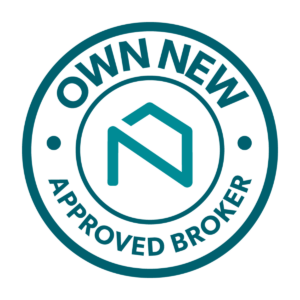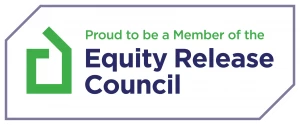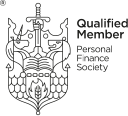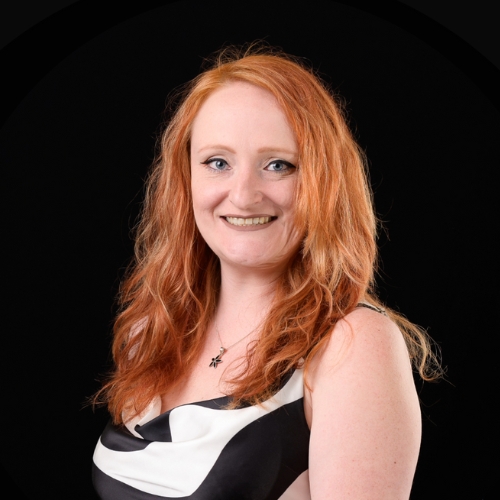Why You Shouldn’t Always Choose the Lowest Mortgage Rate

As a general rule of thumb, when something seems too good to be true, it often turns out that it is – mortgage rates are no different.
When you’re looking to secure the best mortgage deal and are faced with a list of different mortgage products and rates, you’ve probably asked yourself: Is going for the lowest interest-only mortgage rates or the cheapest deals always the smartest choice?
While at first glance, picking the lowest rate might seem like the obvious way to save money on your monthly repayments, the reality is more complex.
Lowest-rate interest rates can sometimes hide additional costs or restrictions that make them less affordable over time. From mortgage setup fees to inflexible terms, the lowest headline rate might not equate to the best overall deal.
In this article, we explore everything you need to know about choosing the lowest mortgage rates. From what to watch out for and how to make the most informed decision on your mortgage deal. Let’s begin.
- Are There Hidden Fees with Low-Rate Mortgage Deals?
- What Are Teasers or Fixed Periods in Mortgages?
- Do Low-Rate Mortgages Come with Early Repayment Charges?
- Are Lower Mortgage Rates Tied to Shorter Mortgage Terms?
- What If I Don’t Qualify for the Advertised Mortgage Rate?
- Why Is the APRC More Important Than the Interest Rate on a Mortgage?
- Are There Restrictions with Low-Rate Mortgage Offers?
- Frequently Asked Questions
- Can a Mortgage Broker Help Me Compare Real Costs Beyond Just Rates?
Are There Hidden Fees with Low-Rate Mortgage Deals?
Yes, many low-rate mortgage offers come with hidden mortgage fees that can add substantially to the total cost of the mortgage. These extra charges can easily add up to erase any savings that are made from the initially attractive interest rate.
Here are some of the most commonly hidden mortgage charges that can apply to low-rate mortgage deals:
| Fee Type | Typical Cost | Typically Applies To |
| Mortgage arrangement fees | £500 – £2,000 | Fixed-rate or low-rate deals |
| Booking/Reservation fees | £99 – £250 | Most mortgage types |
| Valuation and legal fees | £300 – £1,000+ | Property purchase or remortgage |
| Exit fees | £100 – £300 | Charged when closing a mortgage account, even on a standard variable rate |
| Early Repayment Charges | Up to 5% of the outstanding loan sum | When repaying the mortgage before the fixed or tracker term ends |
It is important to always consider the total cost when researching your mortgage deals. When comparing mortgage rates alone, some mortgages with very low interest rates will come with upfront fee mortgage setup fees and additional hidden fees down the line.
Let’s look at an example in practice: consider a mortgage with a 3.00% interest rate but a £2,999 setup fee on a £200,000 loan.
Over two years, you would pay around £12,000 in interest, plus the upfront fee, bringing the total to nearly £15,000.
In contrast, a mortgage with a 3.5% interest rate but no upfront fees would cost approximately £14,000 in interest over the same period.
As you can see, despite the higher interest rate, the mortgage deal without the cost of upfront fees makes the total cost of this two year period cheaper.
It’s essential to look beyond just the interest figures and to calculate the total cost of borrowing over the fixed period. Often, a slightly higher rate with fewer fees can offer better long-term value and flexibility.
At Boon Brokers, our dedicated mortgage advisers can help you compare the total costs of mortgage deals, breaking down all the jargon and calculations, providing you with clear and straight facts. As a fee-free mortgage broker, we ensure you avoid hidden charges and secure the best possible mortgage tailored to your circumstances.
See What Our Clients Have To Say
What Are Teasers or Fixed Periods in Mortgages?
A teaser rate mortgage is a product offering an initially low rate for a fixed period – typically between two and five year period – that will revert to a higher variable or standard rate.
A fixed period – also commonly known at a fixed-rate term – refers to the length of time your interest rate will be locked in. This means that your interest rate will not change, regardless of fluctuations in the Bank of England base rate or outside market conditions.
Let’s take a look at the two most common questions we get asked at Boon Brokers from our clients about teaser mortgage rates and fixed-rate periods:
Can I change my mortgage after a fixed period?
Yes, you can switch your mortgage once your fixed-rate period ends. In fact, it is both very common and highly recommended to switch after your fixed rate expires.
Why?
When your initial fixed term expires, your lender will typically move you onto a Standard Variable Rate (SVR). The rates can often be much higher and are set by the lender themselves. At this point, to help lower your costs, you’re free to remortgage to a new deal or lender, potentially securing a better interest rate and saving money.
Additionally, you can also use this opportunity to change your mortgage term, switch repayment types, or release equity, all depending on your financial goals and aims for the future..
How easy is it to switch a mortgage after a fixed period?
Typically, switching mortgages after your fixed term is straightforward. The process can be streamlined and made especially easy with help from a qualified mortgage broker.
Here’s how the process works:
- Review your current mortgage and check the end date of your fixed term.
- Assess your updated loan-to-value (LTV) based on your current property value and remaining balance.
- Compare new deals that align with your financial situation.
- Apply for a remortgage (or a product transfer if staying with the same lender).
Most lenders will let you secure a new deal up to six months in advance. This can help free up your timeline, help manage your finances, and avoid a default switch to your lender’s SVR before your current mortgage deal ends.
Do Low-Rate Mortgages Come with Early Repayment Charges?
Most low-rate mortgage deals will include mortgage early repayment charges (ERCs). These are extra fees that are designed to discourage borrowers from switching mortgages or early payoffs.
The exact cost of these fees will depend on your chosen lender and specific mortgage product, but can range from 1% to 5% of your outstanding balance. ERCs can apply if you move home, remortgage, or repay your loan early during the deal period.
Before committing to any mortgage deal or remortgage, it is best practice to use an early repayment charge calculator to help you estimate the potential penalties and costs of an early exit.
If you’re worried about being locked into a fixed-rate mortgage and value flexibility, then it might be worth exploring a mortgage without early repayment charge applied. While these may have higher rates, it could potentially help you avoid costly exit fees in the future.
At Boon Brokers, our fee-free, whole-of-market mortgage advisers can help guide you through all of your mortgage options. Whether you’re looking for flexibility, low fees, or long-term stability, we’ll compare the latest mortgage products from a wide range of lenders to find the mortgage that matches your needs.
Fee-free expert advice to find your perfect mortgage.
Book a Free CallAre Lower Mortgage Rates Tied to Shorter Mortgage Terms?
While it is common for shorter mortgage terms to be linked with lower interest rates, this is not always the case.
As a general rule, lenders will view shorter-term mortgages as less risky, because the loan is repaid faster. As a result, they may offer slightly lower rates.
With that said, the monthly repayments will be much higher on a shorter mortgage term, which can massively affect the practical nature of affordability for some borrowers.
Ultimately, short term mortgages typically result in paying a lower total sum over the course of your full mortgage term. However, they are more difficult to financial manage and will appeal to those who are seeking to clear debt quickly or are nearing retirement.
For most, a longer term mortgage with slightly high rates will provide more flexibility and lower monthly costs to manage.
What If I Don’t Qualify for the Advertised Mortgage Rate?
Advertised mortgage rates are often designed to attract borrowers with excellent credit histories, stable incomes, and sizable deposits. For lenders, these applicants are ideal and have a strong financial profile that lowers their overall risk.
If you’ve seen an advertised mortgage rate but don’t fit the criteria, then you’re probably left wondering: “How can I qualify for a low interest rate mortgage?” or even “What mortgage rate can I qualify for?”
The first step to qualifying for a low interest rate mortgage is understanding – and improving – both your credit score and overall financial profile.
Lenders will assess several key factors in your affordability assessment. Most notably, this will include an evaluation of your credit history, employment stability, income level, and the size of your deposit.
If you have a smaller deposit or a less-than-perfect credit score, a lender will typically offer mortgage products with higher interest rates, larger arrangement fees, or a strict eligibility criteria. This is to help minimise the risk for lenders.
However, it’s crucial not to pursue mortgage deals that are out of reach for your circumstances. Submitting multiple unsuccessful applications can have a negative impact on your credit file, damaging your financial profile and reducing your chances of securing a suitable loan.
Instead, it is best practice to focus on mortgage deals that align with your financial situation.
Working with a whole-of-market mortgage broker like Boon Brokers can help you navigate the world of mortgages and identify both lenders and mortgage products that match your financial goals.
Crucially, it’s important to remember that the lowest advertised rate will not always be the best option. Choosing a mortgage that fits your situation – even at a slightly higher rate – can often lead to better long-term outcomes – especially if it aligns with your financial needs for the future.
Is the APRC More Important Than the Interest Rate on a Mortgage?
No, an APRC is not necessarily more important than the interest rate – both need to be equally considered. The Annual Percentage Rate of Charge (APRC) gives an overview of your mortgage’s potential long-term cost, factoring in both the initial deal and a lender’s assumed Standard Variable Rate (SVR) after the fixed or discounted period ends.
APRC vs Interest Rate: What’s the Difference?
While every mortgage has an interest rate for the entire duration of the loan, the advertised rate typically refers only to the introductory period, such as a two to five year fixed-rate deal. After this initial term ends, your mortgage will usually revert to the lender’s SVR, which is often much higher.
This is an important distinction to make, as while the initial rate may appear attractive, it doesn’t represent what you’ll pay over the full term of the mortgage – particularly if you don’t remortgage when your deal ends.
On the other hand, the APRC presents the average total cost of borrowing across the full mortgage term. As such, an APRC will take into account:
- The initial interest rate
- The standard variable rate (SVR) you’ll revert to after your deal ends
- Mortgage fees and charges, including arrangement and valuation fees
It is important to note that while the APRC aims to give an average annual cost of your mortgage over the full term, based on the assumption that you will switch and stay with your chosen lender’s SVR. In reality, this does not account for any future changes, such as remortgaging to a better deal, which would greatly alter the APRC over time.
The APRC will be shown on your Mortgage Illustration – an official document that will outline all the key features and costs of any mortgage product. To learn more about Mortgage Illustrations, read our latest article on: What Is a Mortgage Illustration?
Are There Restrictions with Low-Rate Mortgage Offers?
Yes, low-rate mortgages will usually come with restrictions. Lenders apply strict eligibility criteria and affordability requirements to help minimise their risk. As such, these limitations affect both who qualifies and which properties are eligible for the best deals.
Here are some of the most common restrictions set by lenders:
Loan to Value (LTV) Requirements
The most competitive rates often require a deposit of at least 20%. This would result in your LTV being 80% of the property’s value. As rule, borrowers with smaller deposits will typically face higher interest rates or fewer product options.
Property Type Exclusions
Many lenders will exclude certain types of properties from their lowest-rate deals, including:
- Flats above commercial premises (e.g., flats over shops or restaurants), which carry higher risk.
- New builds, particularly flats or apartments, due to potential valuation or resale uncertainties.
- Properties needing significant renovation or those classed as non-standard construction, which pose additional risks.
Location and Condition Restrictions
Properties located in certain postcode areas, flood risk zones, or listed buildings may not qualify for the best rates. Lenders will often avoid offering low-rate deals on homes with any perceived increased risk factors.
Frequently Asked Questions
How Can I Tell if a Mortgage Deal Is Too Good to Be True?
Always look beyond the headline rate. A deal might seem attractive upfront, but high arrangement fees, early repayment charges, or a costly reversion rate can often make those initial attractive deals turn out to be much more expensive overall.
Make sure you check the mortgage illustration and compare the APRC to understand the full cost of borrowing.
Is a Slightly Higher Mortgage Rate Worth It for More Flexibility?
This will depend on your specific financial goals and mortgage needs. But yes, in many cases, flexibility can be more valuable than chasing the lowest rate.
A slightly higher interest rate might allow you to overpay, exit the mortgage early without penalties, or remortgage sooner. Over the full mortgage time, these benefits can offer substantial savings and greater control over your finances.
Can a Lower Mortgage Rate End Up Costing Me More Overall?
Yes. Quite often, low-rate mortgages will often come with high fees, stricter eligibility rules, or unattractive terms after the initial deal ends.
If you only focus on the interest rate and ignore other costs, you could end up paying more overall. Make sure you check the APRC for a better picture of long-term affordability.
Will I Actually Get the Advertised Rate, or Is It Just for People With Perfect Credit?
Most advertised mortgage rates are reserved for ‘perfect’ applicants: those with excellent credit scores, stable income, and large deposits.
If your profile doesn’t meet these conditions, you may be offered a different mortgage product with a higher rate. Working with a whole-of-market mortgage adviser – like Boon Brokers – can help you find the best realistic deal.
Is There a Cooling-Off Period for Fixed-Rate Mortgages?
No, there isn’t a standard cooling-off period once your mortgage completes. You’re typically locked into the mortgage agreement, unless you repay it early – and this will often be subject to ERCs.
It’s crucial to understand the terms beforehand. Working with a regulated broker can help you get advice on the best deals that offer flexibility, low or no early repayment charges, and better rates.
Can a Mortgage Broker Help Me Compare Real Costs Beyond Just Rates?
Absolutely. Working with a trusted and regulated mortgage broker is one of the best ways to get expert advice and understand the full cost of your mortgage, beyond just the headline interest rate.
While online tools like a mortgage rate comparison calculator can be an excellent and helpful starting point, working with an expert mortgage adviser can help streamline your entire mortgage journey – helping you secure the best deal.
At Boon Broker, we have access to a wide range of lenders and products, including specialist deals that are not always available on the high street.
Our dedicated mortgage advisers provide you with fee-free, expert advice, helping assess your circumstances and match you with a lender that’s most likely to approve your application – even if your situation falls outside standard criteria.
With our support, you can avoid wasted applications and find a mortgage that balances interest rates, fees, and eligibility requirements effectively..
Contact Boon Brokers to arrange a free consultation and start your mortgage journey today.
Kathryn HailesCeMAP
Kathryn Hailes is a CeMAP-qualified mortgage and protection adviser who has been supporting clients with their mortgage needs since 2018. With a wealth of experience across residential and buy-to-let cases, Kathryn specialises in guiding first-time buyers through their mortgage journey.Related Articles
- How Does Being Self Employed Affect A Joint Mortgage?
- Fixed Rate Mortgage
- Advantages Of A Mortgage Broker
- What Is A Shared Equity Mortgage?
- The Mortgage Underwriting Process
- How To Get A Mortgage With A New Job
- Can I Overpay My Mortgage?
- How To Improve Your Chances Of Getting A Mortgage
- What Is Checkmyfile?
- Choosing A Mortgage Broker
- Can I Get a Mortgage on Maternity Leave?









